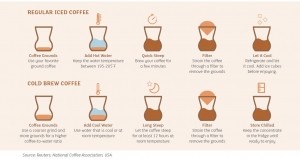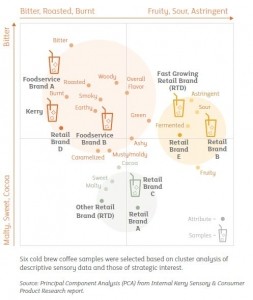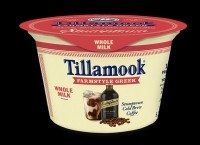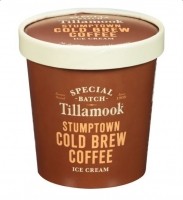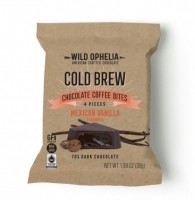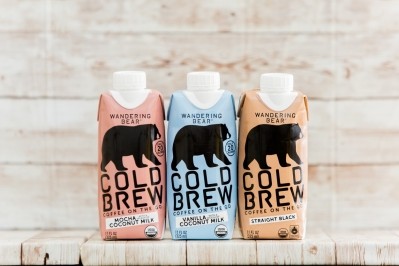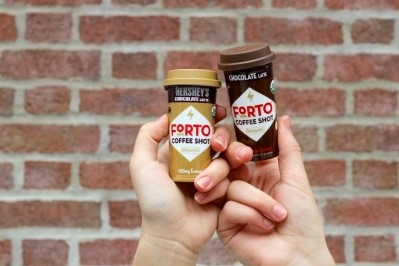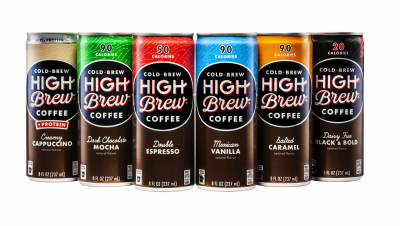Consumers drink cold brew coffee more for flavor than the caffeine jolt, Kerry finds
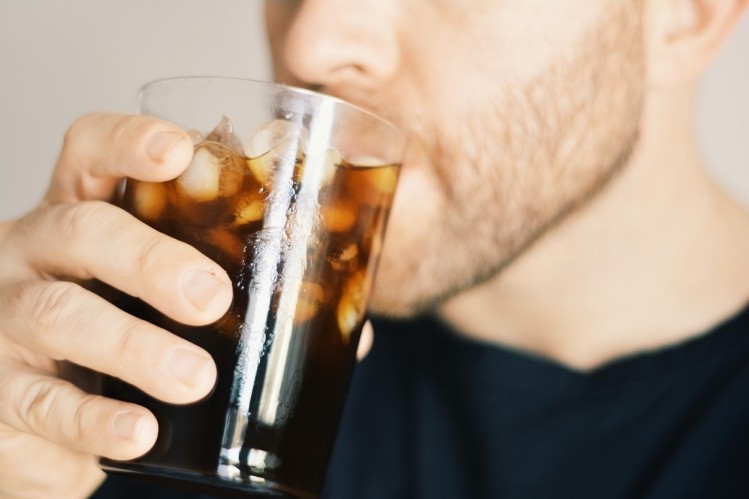
Within the RTD coffee segment, cold brew US retail sales have grown by 450% between 2015 and 2017 reaching an estimated $38.1m, according to Mintel.
“Now especially with younger consumers there’s been more of an exposure to coffee nuances overall because of the third wave and fourth wave of coffee,” Jonas Feliciano, Kerry market & consumer insights manager – beverages, told FoodNavigator-USA.
For brand manufacturers, the mention of the cold brewing method can draw foot traffic to the aisle and appeal to retailers seeking younger consumers, Kerry said.
A Dataessential survey cited by Kerry found that two out of the top four reasons a respondent gave for drinking cold brew coffee was that they “like the taste” (92%) and that the drink is flavorful (74%), compared to hot brewed coffee which consumers tend to drink for its effects on energy and alertness levels.
Additionally, Kerry’s proprietary “cold brew social listening study” found that some of the top descriptors of cold brew by consumers were “smooth” and “indulgent”.
Steep Difference: Iced Coffee vs. Cold Brew
Cold brew is prepared by steeping coffee grounds in cold or room temperature water for 12 to 24 hours resulting in a smoother, sweeter flavor profile than traditional coffee brewed in hot water.
Sensory mapping
As the familiarity of cold brew grows, so too is the appreciation for varied flavor attributes, Feliciano added.
"The most important thing is that not all cold brews are the same by any stretch of the imagination,” he said.
Now that cold brew has reached mainstream acceptance, the company sought to create a more detailed sensory analysis of the chilled caffeinated drink.
Kerry conducted descriptive sensory analysis on more than 20 cold brew coffee samples (including ready-to-drink, food service brands, and company formulas) and identified 18 different key flavor attributes.
A subset of these samples was then used in a consumer sensory study. Kerry’s sensory analysis results indicated that flavors such as roasted, malty, and smoky to chocolate and caramelized were the most preferred flavor attributes among the consumer sampling.
According to Kerry, a longer, cooler brewing pulls out the caramelized notes typically found in roasted coffee without extracting the acids and bitter compounds that hot water temperatures can.
“With less acidity and bitterness to battle, the sweet brown notes and other delicate flavors can be perceived,” Kerry RD&A associate scientist Elizabeth Green, said.
Perhaps unsurprisingly, flavor attributes like astringency, fermented, and sourness were found to be less desirable in cold brew.
Kerry cold brew solutions
Kerry offers premium cold brew coffee concentrate extracts to help manufacturers and food service operators cut down on the amount of time it takes to make cold brew coffee while still hitting on the desired flavor attributes.
“It makes it much easier for operators big and small to enter this space,” Feliciano said. “Now even if I have a food truck, I can serve cold brew.”
A missed generation?
“Cold brew as a concept and as an idea has hit mainstream in acceptance, but I still think there’s a lot of consumers who have yet to try it,” Feliciano said.
Part of that has to do with the prolonged process of making cold brew coffee, which has led to the rise of ready to drink brands offering a convenient way for consumers to incorporate the beverage into their day-to-day.
The other piece of it, according to Feliciano, is that cold brew still seems to be entrenched with younger consumers who have developed a different relationship with coffee and have higher flavor expectations for it.
“Everybody talks about how bad diner coffee is—it’s burnt and it’s been sitting in a pot all day long – and people add a lot of cream and sugar to it… and I think that’s how a lot of people have grown up around coffee especially in the older generations,” he said.
However, consumers over the age of 45 are the largest consumers of coffee in general — 62% of consumers 45- to 64-years-old and 70% of individuals over the age of 65 said they prefer coffee over tea, according to a Statista Survey. While those older consumers are big coffee drinkers they seem to still be of the “mindset that they don’t like black coffee or they want to add creams and sugars to their coffee.”
According to Feliciano, an underutilized attribute is the nutritional play cold brew can make as a way to cut down on sugar and dairy intake since its baseline sensory experience is naturally smooth and even sweet in some instances fitting into the taste preferences of older consumers.
‘A bevy of applications in non-beverage’
“I do think there’s a bevy of applications in non-beverage whether that be in ice creams, in cereals, in energy bars,” Feliciano continued.
Dairy company Tillamook, for example, has collaborated with fourth-wave coffee company, Stumptown to launch a cold brew yogurt as well as a “small batch” ice cream. Artisanal chocolate brand Wild Ophelia and cold brew brand, High Brew, also teamed up to launch a cold brew dark chocolate.
From a brand marketing point of view flavoring a product as ‘cold brew’ rather than calling it ‘coffee’ or ‘mocha’ adds a premium appeal and positive flavor association, Feliciano added.
